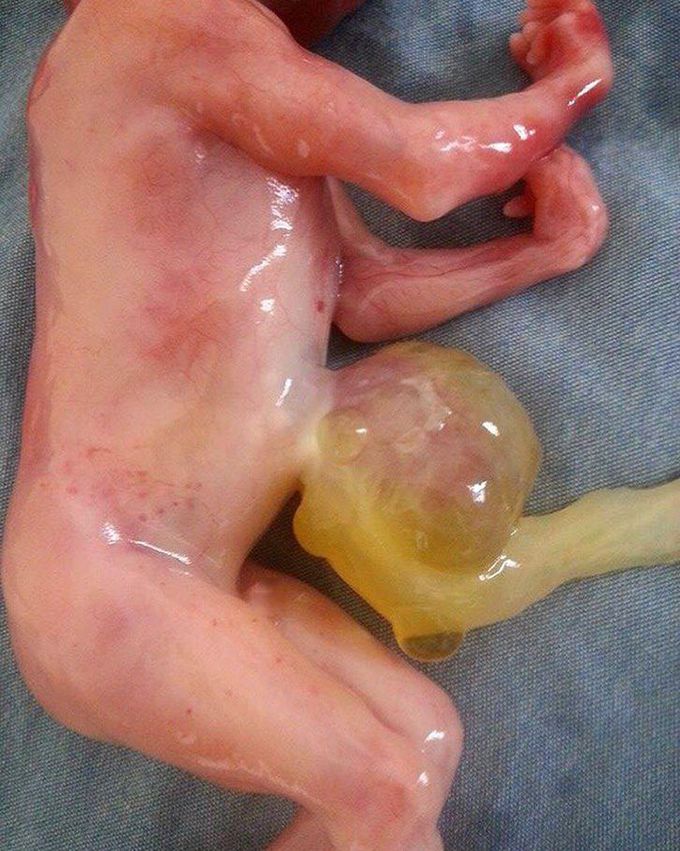


Omphalocele
Pictured is an omphalocele, a congenital condition in which a baby is born with their intestines outside the body in a thin peritoneal sac. Unfortunately in this case, the baby was also shown to have a chromosomal abnormality and further workup showed multiple malformations making life impossible. In normal development the midgut pushes into the umbilical cord around the 6th week to make room for other abdominal organ to grow. In the 10th week the midgut rotates 270 degrees around its primary artery, the superior mesenteric artery, and is configured into the position it will be in for the rest of its life. In certain genetically predisposed embryos, such as those with trisomy 18 (Edwards Syndrome) or other structural abnormalities, parts of the body wall do not form properly and the midgut the fails to return back into the abdominal cavity. This process results in omphalocele. Omphalocele is often detected during routine ultrasound during prenatal care and must be distinguished from gastroschisis, a different disorder of development that also results in newborns born with intestines outside of the body cavity. Thankfully, this condition is rarely fatal on its own and is often found well before the baby is born, which allows the obstetrician to direct the expecting mother to appropriate post-natal care.
Hemodynamic stimuli&nonhemodynamic stimuliEffects of sugar on teeth

